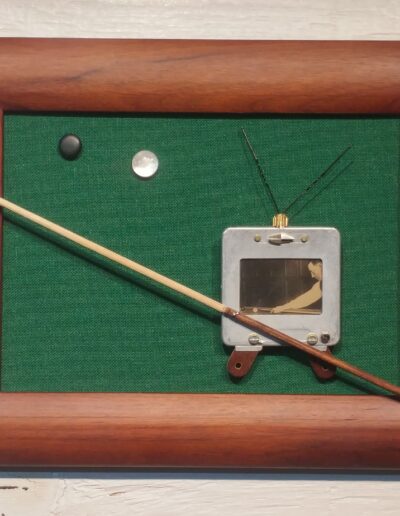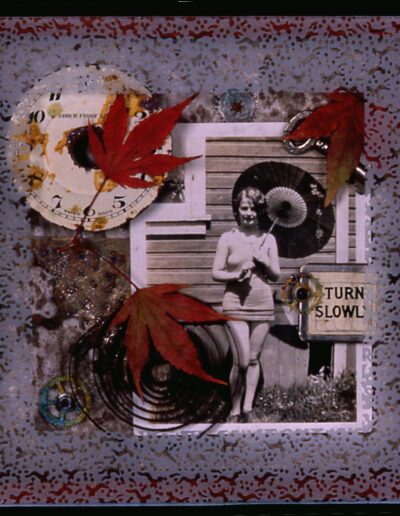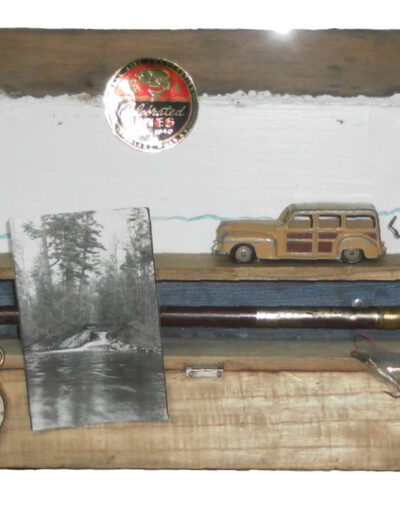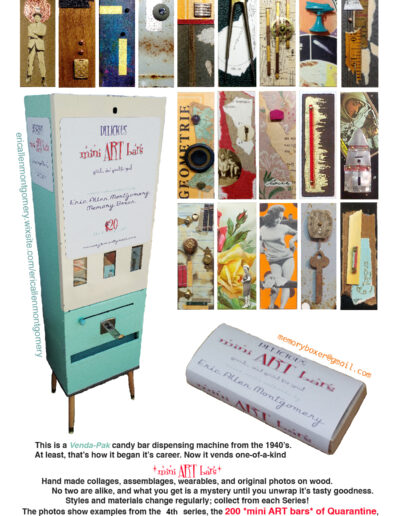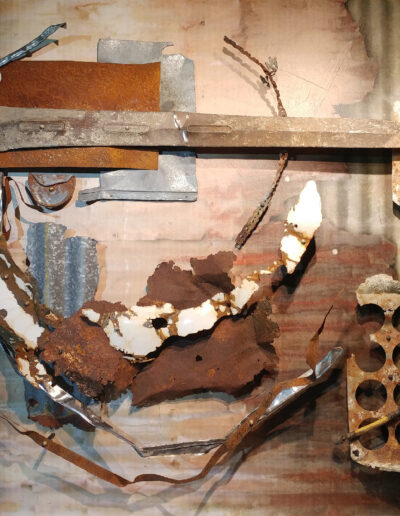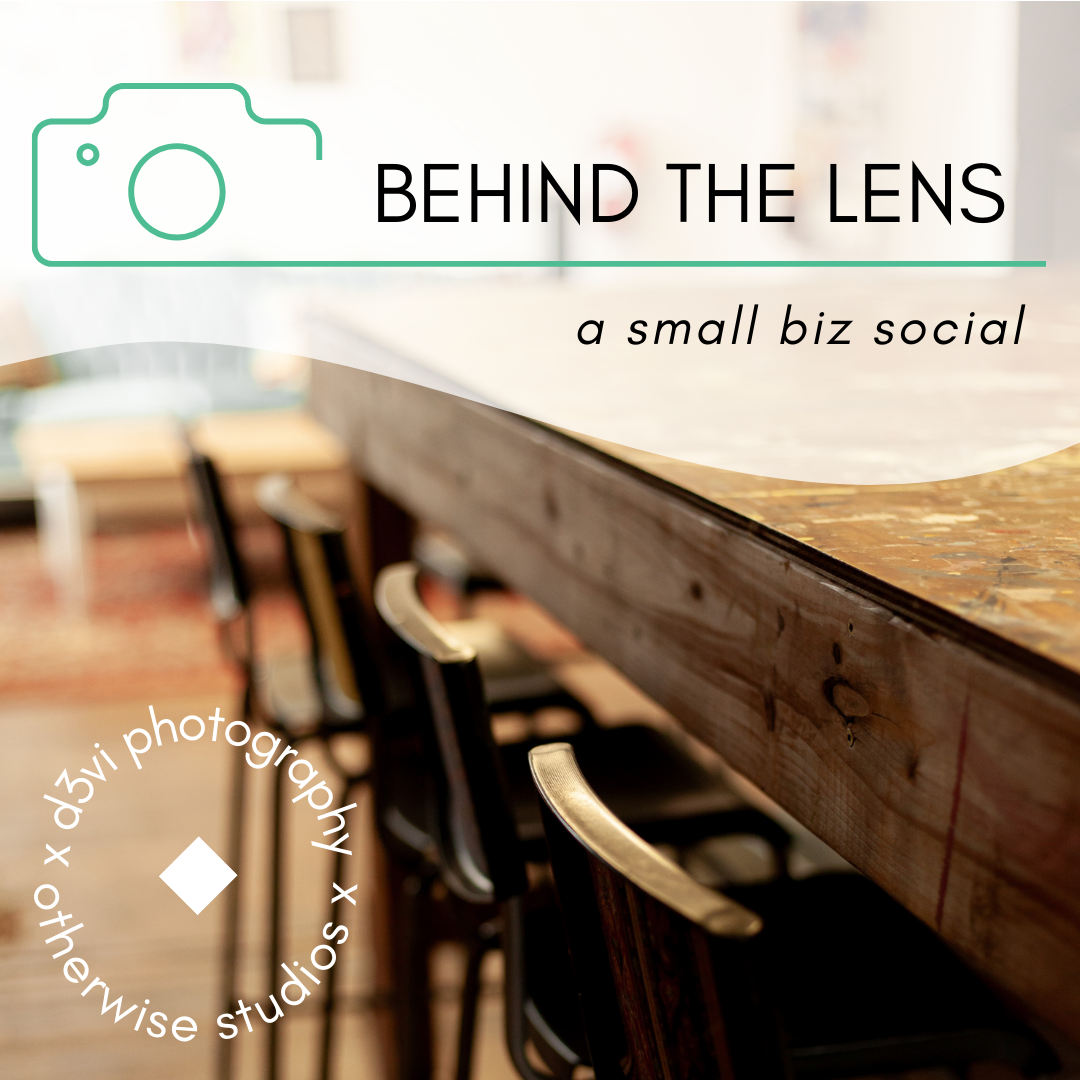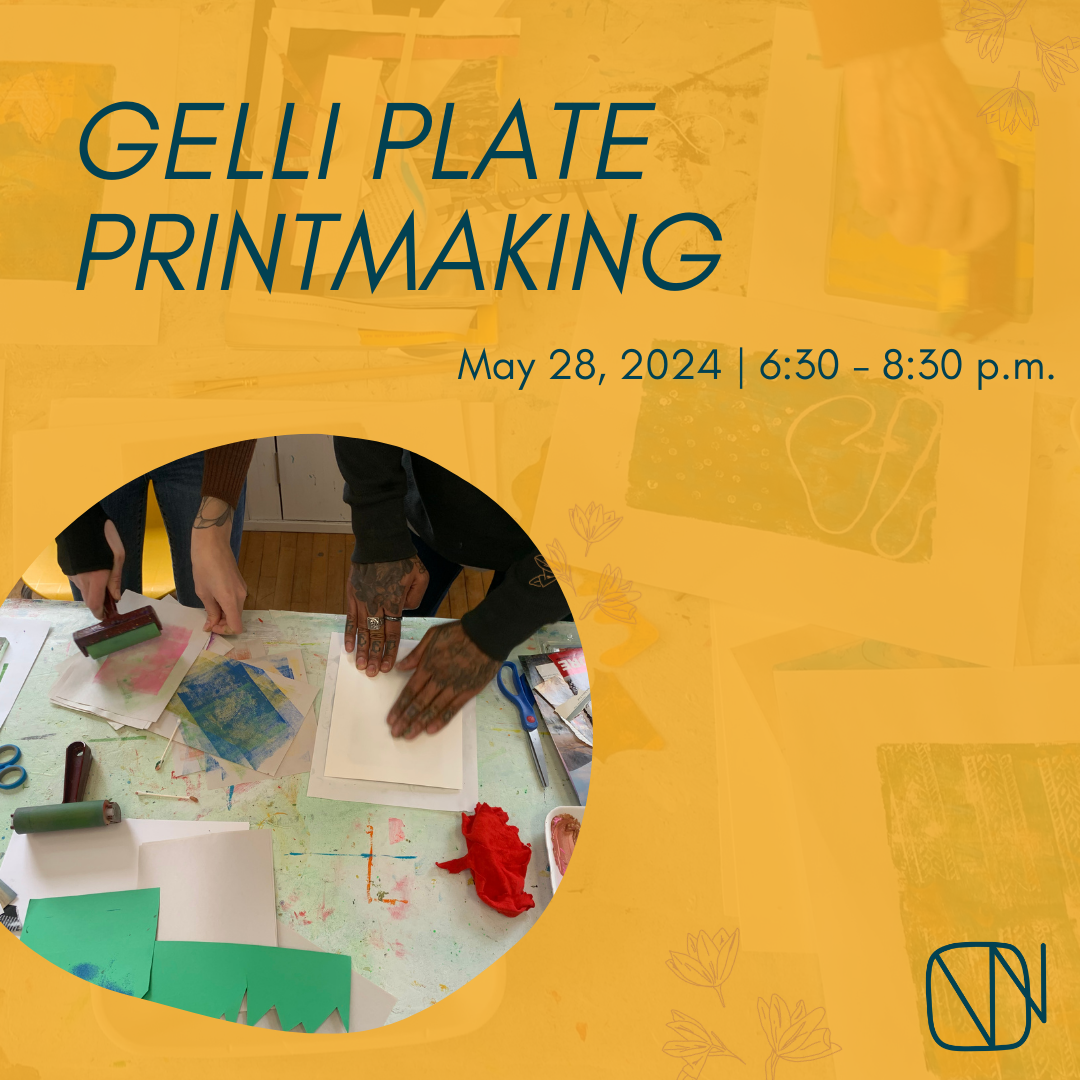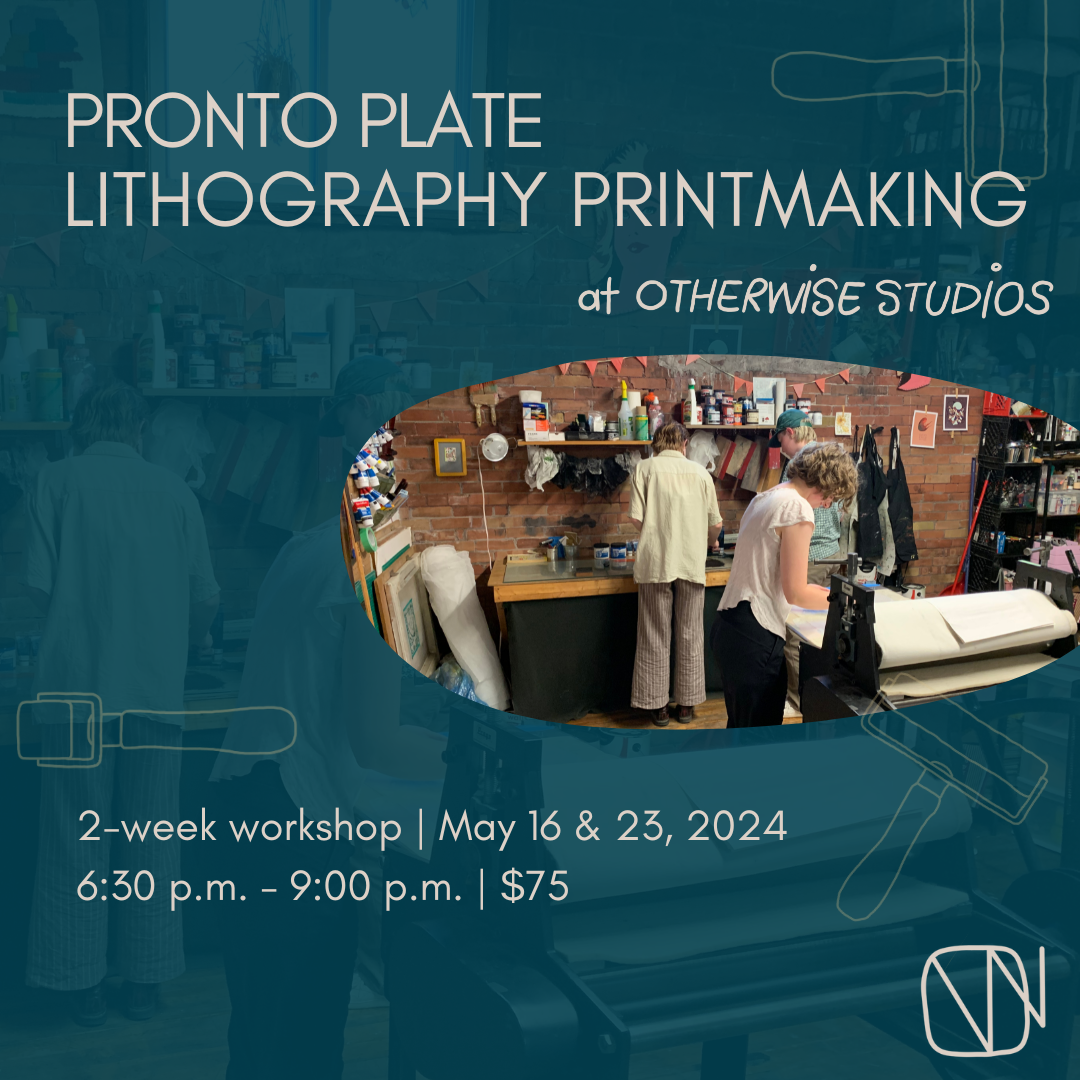
ERIC ALLEN MONTGOMERY
Eric Allen Montgomery: “You’re never too old to learn, and in many cases, the cross-pollination of ideas that can happen by taking a technique or tool from one medium and applying it to something completely different from it’s intended purpose can have surprising, and pleasing results.”
Eric Allen Montgomery is a mixed media artist and arts promoter, creating professionally since 1981. Born in Toronto, and raised in the Niagara region, he spent 17 years in British Columbia running a glass sandblasting studio creating decorative work and custom recognition awards for international clientele, as well as overseeing 2 small galleries.
He returned to his home province of Ontario in 2007, and in July 2008 he moved to Guelph where he spent his first 4 years exhibiting his assemblages and photo-based work at the Guelph Farmers Market. In 2013 he was honoured to win Best in Show at Guelph’s Art on the Street and in 2014 was chosen by the Guelph Downtown Business Assoc and Guelph Arts Council as one of the Quebec St Banner Artists.
As ACE (Art Craft Excellence) creative services he is available as an independent curator, selecting and hanging personal and corporate art collections, as well as assisting artists with studio work, marketing, and gallery and exhibition assistance. From 2016 to 2020 he was the curator of the rotating ART@ebar art displays at the eBar in Guelph
(closed due to Covid), and from 2002 to 2015 was the creator and organizer of the ACE (Art Craft Excellence) show and sale.
2017 saw him joining both the annual West Hamilton Artists Tour and the Guelph Studio Tour.
“I tell stories, both real and imagined, with STUFF.
I utilize a wide variety of found, altered, and created objects and materials, often set against my own photographs of “found textures”.
I create works to celebrate events, interpret themes, or simply to enjoy combining these elements abstractly.
I feel that my diverse technical background (graphic artist, jeweller, glass artist, gallery curator), and my inherent eye for colour, texture, balance, and spatial geometry are well used in this marriage of materials.
Form and Function combine with Reality and Myth, linking the technical expertise of a Craftsperson, the aesthetic and philosophical explorations of an Artist, and the wit and whimsy of a Story Teller.”
We had the chance to ask Eric some questions about his practice to figure out how he works.
Can you tell us more about the concept of telling stories with STUFF? How do you weave storytelling into your work?
Much of the work that I do has a visual narrative – even if it’s not obvious.
Whether it’s wearable jewellery or assemblage sculpture, I work primarily with vintage materials (pre-1960s where possible), and “as found”, so the materials themselves often have an immediate sense of history. I always say that “I tell Stories – Real or Imagined – with STUFF”, and so the “story” aspect may be an actual one – a collection of materials that represent a true event, like celebrating a courtship or birthday (as many of my commissioned Memory Boxes do), or perhaps I find a series of objects that together create a visual pun; or echo a song title. These I consider “imagined” stories, as the full narrative is my own.
What is the significance of found objects in your work?
For me, found objects fulfill a number of needs. They allow me to utilize a wide variety of materials, textures, colours, and patterns – far more than I could ever create myself from raw materials like paint, metal, or clay. I prefer “as found” materials, whether those are human-made or natural, and the inherent “patina of life” that effects their surfaces can’t be reproduced. I love the colours and textures of rusted steel or copper verdigris, crazed ceramic glazes, the craquelure in old paints, even distressed plastics. As I noted before, the objects themselves bring their own significance, as they can trigger memories and associations.
What would you say is the most surprising and/or valuable thing about working with found objects?
Again, their mnemonic quality. That objects – even fragments – can trigger a vast array of memories and associations. Those can vary completely and significantly between me – the maker – and the viewers of my work.
Do you have a favourite piece you’ve ever made? What is it, and what makes it so special to you?
I actually had to save this one for last. What a question! It’s like asking “which is your favourite child?”. I have been making art in one form or another since my mid teens – and I’m 60. I’d say I have three that kind of “tie” for favourites, two wall sculptures and a “wearable”.
1. Henshin (Transformation) is from 2000. I began doing assemblage in 1993 after my first time at the Pilchuck Glass School in Washington state. While several years into my assemblage explorations, this was one of the first pieces that made me stop and think “oh… this one’s MINE; I can’t sell it”. It marked a significant leap both technically and conceptually and helped cement my conviction that assemblage truly was my medium, a decision that would slowly steer me away from glass.
2. Hidden River, was finished in 2017… but began in the late 1990s! It’s entirely “as found” vintage materials – found photos, a Dinky toy Plymouth, caravan, rod and case, various fishing lures and compass. I tried creating the piece many times but was never satisfied – it was missing “something”. It was the found backboard that suddenly tied the whole collection together and made it sing. That just proved that as an assemblage artist you should never throw anything out, or use it randomly, as you may need it someday!
3. Marguerite en Acie (Steel Daisy) is from 2018, and was made during a 2-week trip to France. This is a small brooch is one of the simplest things I’ve ever made. Only two components; a small cast resin daisy, likely Japanese from the 1950s, and a fabricated steel sheath for what were likely embroidery scissors, and likely dating from the turn of the 20th century. The temptation to add more bits, make it move, or do something, to at least have three elements (a magic number for me), was incredible…but restraining myself to the initial two pieces was absolutely the right thing, and it remains one of the strongest pieces I’ve made to date.
You use a variety of tools and methods in your art-making, and it seems like every time we check up on what you are doing, you seem to be learning a new skill! Talk to us about the importance of skill-building and learning in your art practice.
In my late 20s I took one of those Career testing courses, that “supposedly” informs you of potential career paths via Meyers-Briggs Personality Type tests, etc. Top of my hypothetical list was “Professional Student”. If only I could have figured out a way to be paid to learn!
Over 40 years of artistic practice I’ve explored many different mediums, and love to play and experiment, even if it’s only to get a sense of something without any plans to delve deep. You’re never too old to learn, and in many cases, the cross-pollination of ideas that can happen by taking a technique or tool from one medium and applying it to something completely different from it’s intended purpose can have surprising, and pleasing results.
How do you usually get into the zone of making a piece? How do you start, how do you choose your materials, and how do you know when you’re done?
I could be flippant and say “I get in the Zone by smoking some sativa, cranking some inspiring tunes (especially trip-hop or similar), and then pulling STUFF from my boxes and trays of materials – GO!”. In some cases, that’s pretty accurate. But it’s certainly not always the case, and it’s not always that easy.
Much depends on what it is I’m doing – the detail and fine motor control necessary for jewellery work or using power tools is such that attempting anything of note while high is out of the question.
And the “how do I know when I’m done?” part…always in question. My approach has always been a tad excessive; I’m a Morriss Bettter kinda guy (a pseudonym I’ve played with for decades). I’m attracted to minimalism because it’s so in opposition to my nature.
Tell us about curating at the e-bar – what part does curation play in your practice and/or community-building?
My curating and hanging the ART@eBar shows came about by happenstance, after volunteering to hang a staff show when I was working at Wyndham Art Supplies. My approach to curating is based in a desire to create and further Creative Community, and my approach to hanging shows isn’t dissimilar to my approach to creating assemblage – I have an eye for spatial geometry, colour and form, tone and texture, and the ability to weave narratives from disparate materials.
In the case of the eBar, I was given fairly free reign. I have found that themed shows brought a wide variety of styles and techniques into play, allowing many artists from many backgrounds to take part. I recognized that – first and foremost – it was a bar, not an art gallery, and also recognized that Guelph has an extremely varied, and quite diffuse creative community.
I like to think that I helped foster an environment that the city’s creative community was desperately hungry for – the opportunity to have your work seen, no matter your educational background, or years of experience, or even mastery of materials.
What’s your favourite part about participating in Open Studios year after year?
Playing Show & Tell. My work has a high…Quirk Factor. Assemblage by its very nature often involves non-traditional materials and techniques that people may not be familiar with. And a lot of my work involves visual puns or, as I’ve noted, contains strong narrative elements, but those Stories aren’t always obvious to a casual viewer. The Studio Tours allow me the chance to not only show my work, but to tell the Stories behind the pieces. My influences, the histories (where I know them) of the materials I’ve chosen, or to discuss the techniques that I use. As my technical approaches range from traditional silversmithing techniques in my wearable art pieces to a fairly loose “screws and glues” approach to my assemblages, not everyone is familiar or knowledgeable, and these face-to-face opportunities to engage folk is a treat.
What should people expect from Open Studio this year? Where can they find more information?
There are 40 artists involved, and over 30 locations. Nearly all the artists who’ve been taking part in recent years have returned, along with some new faces. Most are showing from their studios; some are commercial spaces, some are in their homes. The locations for artists and studios, can be found via the studio tour website: https://www.guelphstudiotour.ca/
We’ve also got a Facebook group page, and are on Instagram
If you could have dinner with any artist, dead or alive, who would it be and why?
This is even harder than the “favourite piece of art” question! Joseph Cornell, who is the “Grandfather” of assemblage artists, has been one of my most influential artists for decades, but he was painfully shy, and I doubt it’d be a dinner filled with deeply inspiring conversation, wit, and wisdom. There are dozens…hundreds of living artists worldwide whose work leaves me breathless, and who I expect I’d totally enjoy a dinner with. But choose one… that doesn’t seem possible or fair. I think I’ll cheat a bit here then and say my actual, maternal grandfather, Gordon S. Adamson. I was in my 20s when he died, but he’d been lost to dementia for several years before that. He was an award-winning architect (founded Adamson Associates, who now operate globally), but was also a hobby painter and photographer. I have a few of his landscape paintings and some sketches but never had the chance to really discuss art with him when I was young, at least not in any meaningful or professional manner. To have the chance of one more dinner with him – especially if we could just talk about his travels, his approach to painting and photography, design in general? That would be an honour and a joy.

